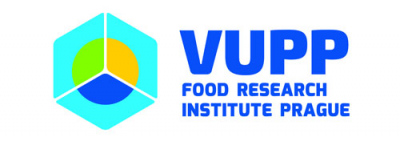Immobilization of proteolytic enzymes on nanofiber membrane
Technology description
| The name of the technology: | Immobilization of proteolytic enzymes on nanofiber membrane |
|---|---|
| Challenge: | Immobilized trypsin provides a fast and convenient way to digest proteins. In recent years, a number of independent publications have dealt with different ways of immobilizing trypsin to different types of nanofibers. The advantage is high mass transfer. However, the limitations for further development remain its instability in solutions, which is solved by the present technology. In addition to increasing stability, its advantage is also simplicity and unpretentiousness. Due to the absence of the chemical crosslinking agent, there is no loss of specific trypsin activity by denaturation and / or aggregation. The biocatalyst does not contain any toxic additives and is therefore also suitable for food applications. |
| Description: | The immobilization of enzymes onto a carrier enables their recycling, continuous operation, increases stability and facilitates the isolation and purification of products. Nanostructured materials enabling high mass transfer are the ideal substrates for enzyme immobilization. The basis of the present technology is developed and tested laboratory model of enzyme (nano) membrane reactor (EnMR). This EnMR is a versatile device and PHB submicron fiber membranes as well as 3D constructs can be used to immobilize a wide range of enzymes of different types without the use of potentially toxic crosslinking agents. Immobilization of trypsin can successfully solve the problems of its considerable instability in solutions, mainly related to its rapid autolytic decomposition. Moreover trypsin is one of the most commonly used enzymes in the food industry and has therefore been chosen as a model enzyme for experiments. A great advantage of the described process of immobilizing trypsin to PHB materials is its simplicity and low-cost. Since there is no need to use a chemical crosslinking agent, there is no loss of specific trypsin activity by denaturation and / or aggregation. The biocatalyst thus prepared does not contain any toxic additives and is safe for food applications. |
| Commercial opportunity: | The range of potential applications of EnMR and proven technology in the food industry is very wide. Examples include lactose-reduced milk production, hypoallergenic milk production, enzymatic clarification of wine and beer, production of biologically active peptides, production of prebiotic oligosaccharides or production of biofuels. Potential industrial candidates are primarily dairies, breweries, wine producers, etc. |
| IP protection status: | Czech utility model 33095 |
| Development status: |
Phase 3Corresponds with TRL 5 and TRL 6 Technology validation and implementing it in real environment. Testing the technology outside of the laboratory and its adjustment to external conditions.
|
| Partnering strategy: | Collaboration licensing |
| More information: | |
| Images: | No picture inserted |
| Categories: | Food industry |
| Owner of a technology: | Výzkumný ústav potravinářský Praha |
